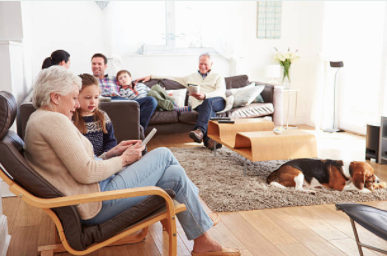About Our Community-Based Neighbourhood
PLEASE TAKE OUR SURVEY
» SUBSCRIBE
» CLICK HERE FOR EVENTS & PROGRAMS
Frequently Asked Questions
Proviso: As our group is currently forming, all ‘answers’ represent the ideas of those currently involved. These ideas will morph with consolidation of our membership.
What will the homes cost?
We would like our homes to be financially-accessible to most of our members.
Responsible financial management requires design and building decisions based on budget and sustainability, e.g. taking advantage of economies of scale. Members influence decisions on what is ultimately built, therefore, we will keep affordability in the forefront as we work with a transparent budgeting process.
Purchase prices of our homes will depend primarily on the square footage (studio to 4 bedrooms). Prices are not yet set because the design of the community is not yet finalized and approved by the District of Sechelt.
The purchase price will include all common amenities, including extensive shared Community House interior and exterior spaces. For details on the Community House, see FAQ – What are the community amenities?
Our goal is for at least 1/3 of our owners to purchase homes in TCV with a down payment and monthly payments that fit federal and provincial affordability guidelines. This is our specific response to the very real challenge of helping our members who are first-time homeowners.
What will the homes be like?
There will be 25-30 apartments, as well as the shared Community House spaces.
The homes will range in size from 500 – 1500+ sq ft, from studios to 4-bedroom. Each apartment will be complete unto itself, with kitchen, living and dining area. You won’t need to purchase the floor space of a spare bedroom or huge family/living room because you have access to the well equipped, shared amenities of the Community House which includes a guest bedroom.
The design of the homes and the neighbourhood will allow you to choose when you prefer the privacy of your home sanctuary over participation in community activities.
All parking spaces will be located underneath the building, at ground level. Most residents will walk through the neighbourhood to their homes, with access designed to accommodate those with mobility issues.
Are there monthly maintenance fees?
Yes, you can expect monthly maintenance fees, the amount which will depend on your unit size unit and how we decide to cover costs. Typically such fees cover community internet connection, maintenance of building exteriors and common property facilities, mechanicals, equipment and landscaping, garbage & recycling, sewer, property and liability insurance, and shared E-bikes, etc. (should we choose them).
The creation of a Contingency Reserve Fund will provide for long-term maintenance of the building itself and mechanicals.
What if I don't like the people? What if they don't like me?
You start by self-selecting in, and getting to know everyone; first by observing how the group works together. The next step is participating and eventually you become one of the decision-makers yourself.
Typically people who choose to live in community-centered neighbourhoods have done a lot of work on themselves, on how to effectively communicate and solve problems and challenges.
Will my home be energy-efficient?
The goals are conservation of energy and reduction of greenhouse gases. There will be NO gas-combustion mechanical equipment and electric appliances. We would like minimal energy bills, excellent natural ventilation and light, including use of low toxicity and sustainable building materials, and much more.
TCV’s design, engineering and specification are concentrated on permanence – many generations of capital appreciation and contribution to the character of Sechelt. Our design decisions will create an energy efficient building with ongoing affordability – homes will be built to last.
What are the levels of involvement prior to construction?
We have clarified the process whereby interested people can select their level of involvement and commitment. Visit the “How to Join” page. Equity Members will soon be able to contribute to decisions about building and apartment design and Community House spaces.
What are the shared community facilities and amenities?
The goal is a minimum of 3235 sq ft of shared Community House space. We are planning for a community kitchen, great room/flex room/dining room/meeting room, children’s and teen rooms, separate quite lounge, accessible bathroom, laundry and guest room. On an outside terrace will be outdoor seating, play/dining/community garden with elevated planter boxes, garden recycling and maybe a small greenhouse. The parkade will contain secure storage space for recreational equipment and bicycles, etc., with limited space allocated for personal storage.
What would you say to E-cargo bikes for exclusive use by residents? to a carshare company parking space in front of our building, just steps from your home?
All to be decided by the Equity Members within design and budget parameters!
How will members use the Community House spaces?
We will get together in the Community House spaces for many of our community activities, including meals, social events, circle/team and community meetings.
Other possibilities for the use of the Community House are: hosting parties and games nights, guest speakers and concerts, classes in several movement practices – maybe Tai Chi, yoga or exercise classes.
Since the Community House is an important extension of each member’s home, members may also reserve portions of it for a variety of personal events, including private parties and meetings of outside groups to which they belong, such as book clubs and community groups.
We may decide to intentionally connect with the larger community by making our Community House spaces available to outside groups and individual practitioners, on a fee basis, for activities ranging from weddings, local strata meetings, massage therapists and other body workers, to cooking and writing classes.
We will make all decisions regarding our Community House using Sociocracy (see FAQ “How will 20+ households make decisions together?)
How do common meals work in the community?
Charles Durrett, the architect who coined the term cohousing and, with then-wife-architect Katie McCamant, brought the concept from Europe, says we should aim for five meals a week. He says breaking bread together brings the community together and helps people sort out their differences. The heart of the community IS the sharing of common amenities, so eating meals together is the SECRET SAUCE of community resiliency. Research shows that sharing meals also leads to a more enjoyable and longer life. A common meal may be the only time in a busy week when there is a chance for a real conversation with our neighbours; and if we have a little extra time for some after-dinner beverage and conversation….even better.
Participating in the community mealtimes is always voluntary. There will be opportunities to choose to share small or large group meals several times a week in the Community House. This means less grocery shopping, cooking and kitchen clean-up for each individual household. A team of 2-4 persons prepares the meal for however many residents sign up in advance. There is a good deal of variation in the menu, way of cooking and cleanup responsibilities – it’s up to the team. Typically, each adult is involved in meal preparation and or cleanup once every 4-5 weeks…not much time invested for so many meals prepared by others!
Dinner price typically range from $7-12. All details regarding shared meals and expenses will be discussed and agreed upon before we move in.
There will also be potlucks, picnics and all sorts of other ways to chow down together as a community or in impromptu groups.
Will I be able to do my "fair share"?
The functional life (governance) of our community will be carried out by designated Circles, e.g. Community Life, Gardens/Grounds, Common House, Systems/Buildings, Finance/Legal, Membership Outreach, etc.
All Circles are related, but each has (almost) full authority to make decisions within its domain. The few decisions that do require input from the entire neighbourhood are brought to a Full Circle gathering – much like an AGM or SGM.
To ensure that our community will “work”, we will make written agreements about the “minimums” of participation. Everyone is accountable and responsible and participates in accordance with their personal preferences, abilities and stage of life.
Typically, much of the work in the Circles is conducted 4-8 hours a month. If you are currently own a single-family dwelling or are on a strata, you are likely putting in at least that many hours now!
Members with limiting capacities help with planning, purchasing supplies, watching kids, providing food and drink to those doing the heavy lifting, etc. Longer weekend community workdays are highly successful for occasional large-scale projects.
Ultimately, we’re looking at our strengths, weaknesses and ways to support each other in a healthy way.
Will I have enough privacy?
Community-centered neighbourhoods are very popular with introverts, because there is no “effort” required to relate to others. Brief daily interactions happen naturally and spontaneously.
Very few of us like socializing all the time. You have the choice between enjoying the privacy of your own home sanctuary and enjoying whatever happens to be going on in our neighbourhood. How much you socialize is absolutely up to you.
How will 25+ households make decisions together?
When the TCV group first formed in September 2021, those involved used the Sociocracy governance model of collaboration and consent decision-making. We hired a Sociocracy facilitator to work with us during our meetings so that we could quickly learn the ground rules for the various governance processes.
Sociocracy governance is based on everyone having a voice, transparency, effectiveness and shared intention – the glue of a resilient community. All voices are heard, resulting in more sharing of information and more collaboration. The collective wisdom leads to elegant, creative solutions that serve the best interests of the whole community. This governance model forges relationships and build community from the get-go.
After occupancy, residents will participate in governance Circles at their interest, ability and preferred level of engagement, with owners and Save-then-Homeowners making decisions about financial matters.
There will be a Steering or Mission Circle, which serves as our legal Board of Directors, and a General Circle, largely made up of representatives from each of the smaller Circles. The majority of the time and decision-making authority is delegated to, and the responsibility of, other, smaller Circles. When we have General Circle meetings, it is similar to an AGM in a strata.
Will I have my own kitchen?
YES! Each home will be fully outfitted with K/BR(s)/Bath(s). Your home is simply complemented by the extensive shared community spaces right outside your door. You will find that your neighbours have a healthy respect for the need for private time and space, which your personal home sanctuary provides!
Can I have pets?
Yes, we will be a pet-friendly neighbourhood. For many individuals, pets provide enjoyment, companionship and an enhanced quality of life. Consistent with our values of respect and cooperation, pet owners must take primary responsibility to ensure that their pets do not disturb or become a nuisance to others. Some participants are even talking about pet sharing!
Are there advantages to joining The Coastal Village early on?
Yes, there are advantages!
• help shape the culture of our community
• establish seniority for home selection. The date of Equity Membership has a big influence on being able to participate in the first round of home selection, so earlier Equity Members have the most choice.
• only Equity Members can contribute to decisions on how we will live as neighbours (pet policy, shared amenities, landscape design, etc.)
Subscribe to our email list so that we can keep you informed of all developments. Becoming a member is a self-selecting process. Satisfy your curiosity first. Email us and ask questions.
When can I move in?
We are working with a developer on a site in downtown Sechelt on the Sunshine Coast, near the water. Their goal is to be able to submit the development application for the entire neighbourhood in Spring 2024. If all goes as planned, site preparation could commence by summer 2024.
» SUBSCRIBE
» CLICK HERE FOR EVENTS AND PROGRAMS

We’d love to hear from you
We welcome you to email or submit this form to connect with us and have any of your questions answered. It would be great if you would tell us a bit about yourself and what you’re looking for. Your message will NOT subscribe you to our email list.
Location:
5729 Teredo Street, Sechelt, BC

